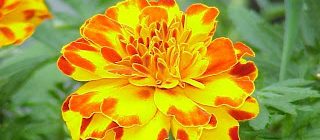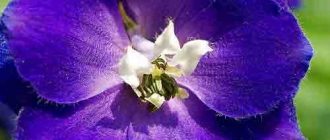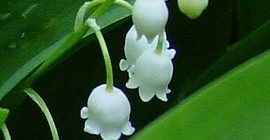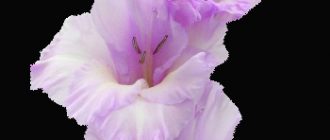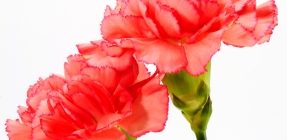The giving of flowers as gifts to celebrate birthdays is believed to have started during the Roman Empire. Roman birthday celebrations were when family and friends would gather together with gifts. Those gifts were often in the form of flowers and birthday celebrations were not just for individuals, they were also a way of honouring Roman Gods with altars decorated with flowers.
During the Victorian era a language of flowers was developed. As the time was conservative, etiquette dictated that the expression of love or affection was taboo. Specific flowers eventually had a meaning attached to them to allow the passage of a secret, personal romantic message between two lovers.
The introduction of the Language of Flowers is credited to Mary Wortley, Lady Montague, the wife of the Ambassador to Turkey. Her ‘secret messages’ were first used in England and gained popularity with many cultures.
The word used to refer to plants is ‘flora’ and that was the name of the Roman Goddess of Flowers. A Flora Festival, known as Floralia, was celebrated in early spring and centred on flowers and two temples were dedicated to Flora in Rome.

The January birth flower is Carnation
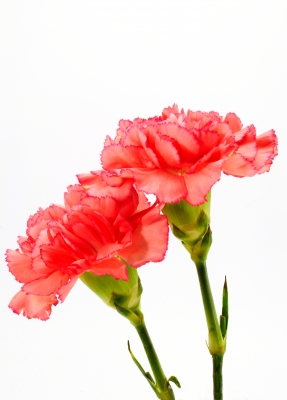
This Eurasian plant has a spice scent.
The carnation, also called the Clove Pink or Gillyflower, can be found in numerous colours ranging from pink to purple-red and are said to symbolize love, fascination and distinction.
Carnation gets its name from the word ‘coronation’ or the Greek word for ‘flower garlands’ which is ‘corone.’
Some of the specific messages attaches to Carnations include “My Heart Aches For you” (red), “I’ll Never Forget You” (pink), “You Have Disappointed me” (yellow) and “I Wish I Could Be With You” (striped).
The February birth flower is Violet / Iris

This is a low, herbaceous plant that comes in various shades of blue, mauve, yellow and cream as well as several species identified as pansies and symbolize faithfulness, humility and chastity.
The word ‘violet’ is believed to originate from the word ‘vias’ which translates to mean ‘wayside.’
Hidden messages of the Violet included “I’ll Always Be True” (violet) and “Let’s Take A Chance” (White/Cream).
The March birth flower is Daffodil

The daffodil, also known as Jonquil or Narcissus, is often recognized as a yellow flower but other colour varieties are white and orange. It is a widely cultivated ornamental plant with clustered flowers and a trumpet shaped central crown. This fragrant flower is native to southern Europe.
The word ‘jonquil’ comes from ‘jonquillo’ a Spanish word meaning ‘rush’ as in a description of the leaves of the plant that are ‘rush-like.’
When giving a daffodil, the message being sent is “You Are An Angel.”
The April birth flower is Sweet Pea and/or Daisy

Sweet Pea: The fragrant pastel coloured flowers of this climbing garden plant make it extremely popular.
The sweet pea appears in a wide range of pastel colours and also blooms in two-tone varieties and symbolizes pleasure or good-bye, which explains the message “Thank You For A Lovely Time” attached to the flower.
The Latin ‘lathyrus odoratus,’ which means ‘pea’ and ‘fragrant’ is how the sweet pea was named.

Daisy: Who has not made a daisy chain before? I was forever making them as a kid at my grandparents home. They have several meanings which include, cheerfulness (all those amazing colours), innocence (thanks to it being such a child focused flower), purity and beauty. It is also Queen Victoria’s favourite flower.
They were discovered in South Africa by Scotsman Richard Jameson but their have been stone carvings featuring daisies that go back to 3000BC.
The May birth flower is Lily

This low growing perennial plant has small fragrant bell-shaped flowers and two large oblong lanceolate leaves and bloom in white.
Latin words ‘maius’ (May) and ‘anthemon’ (flower), a reference to when this plant blooms, is how it was named.
Lily of the Valley symbolizes sweetness and humility and “You’ve Made My Life Complete” is the hidden message connected to the flower.
The June birth flower is the Rose

This flower and shrub of the Rosa genus are usually found in the Northern Hemisphere and are available in colours ranging from red and pink to white and yellow.
Latin ‘rosa’ and Greek ‘rhodia’ are the words that led to the naming of the rose.
Hidden messages of roses include “I Love You” (red), “I Am Worthy Of You” (white), “You Are My Secret Love” (orange), “You Are Heavenly” (white), “I Am Not Worthy Of Your Love” (yellow), “We Are Inseparable” (white and red) and “Please Believe Me” (pink).
The July birth flower is Larkspur / Delphinium

Native to the North Temperature Zone, Larkspur is a genus of ranunculaceous delphinium plants with bright flowers and spurred calyx and symbolizes feelings of an open heart and ardent attachment.
There are secret meanings to three colours including “Fickleness” (pink), “Joyful, Happy-Go-Lucky” (white) and “You Have Such A Sweet Disposition” (purple).
The spur of the flower, which is reminiscent of parts of a lark, created this flower’s name.
The August birth flower is the Gladiolus

Glads, as they are often called, are native to tropical and South Africa and are any plant of the genus Gladiolus. The plant has sword-shaped leaves with one-sided spikes of funnel-shaped, bright flowers.
“Love At First Sight” is the meaning of this flower when offered as a gift.
The September birth flower is the Aster

This fall-blooming herb with daisy-like flowers is also called the September flower and is said to symbolize love, faith, wisdom and colour, which blooms in pink, red, white, lilac and mauve.
The Greek word for ‘star’ is how this plant was named, as the shape of the flower head resembles a star.
The hidden message “Take Care Of Yourself For Me” is what is being sent with a gift of asters.
The October birth flower is Marigold

The word marigold is used to describe plants with golden yellow blossoms and the Calendula (marigold) symbolizes sorrow or sympathy, which explains the hidden message “My Thoughts Are With You”, associated with this flower.
The November birth flower is the Chrysanthemum

This mostly perennial plant is also called the ‘mum’ and symbolizes cheerfulness and love and bloom in colours ranging from pink and red to white and yellow as well as mauve and orange.
The secret meaning of the mum is “You’re A Wonderful Friend.”
The December birth flower is Narcissus or Poinsettia

Narcissus: also known as the daffodil, is a bulbous plant with tall linear leaves with bright yellow or white flowers and is said to symbolize sweetness and is native to the Mediterranean with some species in Asia to China.
Poinsettia: You will have seen these every year around Christmas. In fact, I love using them as my Christmas table center piece. I did not know until I did some digging (see what I did there, nice pun!) that they were one of the birth flowers.

This bright. vibrant red and green plant originates from Mexico and Central America. Aztecs used to create red dye from the leaves (have you ever tried this?).
The message connected to this flower is “You’re The Only One.”

